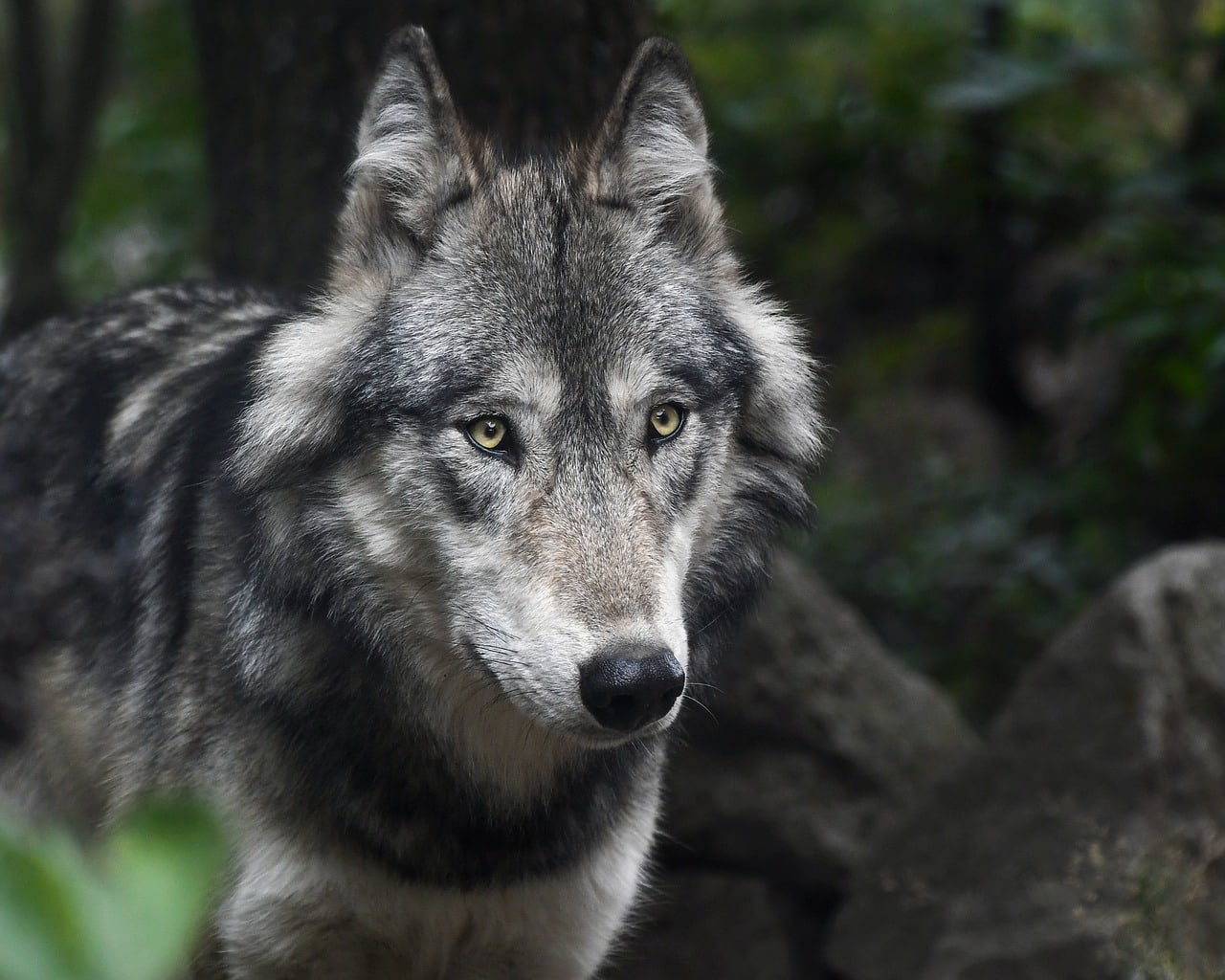

Wolves are incredible, wild animals. Their image is used to represent free-spirited and instinctive nature.
While they share a lot of physical and some biological similarities with dogs, the two species are quite different. It is their similarities, especially as pups, that has led to a lot of people buying young wolves, only to discover that they retain their wild habits and practices when they get older.
Wolves hug with their mouths, which can be terrifying for adults, never mind children. In the wild, they roam up to 100 miles per day, which means owners have a lot of daily exercise on their hands.
At best, a pet wolf will be semi-wild. At worst, it will be completely unmanageable and potentially dangerous. Despite this, no federal laws prohibit the keeping of wolves or wolf dogs. Some states, including Hawaii and Connecticut, have outlawed their ownership. In other states, it is mandated at a county level.
So, wolves are beautiful and intriguing, but they’re also potentially dangerous, require a considerable commitment, and keeping one might be illegal in your area. So, can you have a wolf as a pet and, even if you can, should you? In short, it is not recommended to keep wolves as pets for a variety of reasons.
Below, we look at the difficulties and the legal requirements, so that you can determine whether keeping a wolf as a pet is a good idea for you and your family.

About Wolves
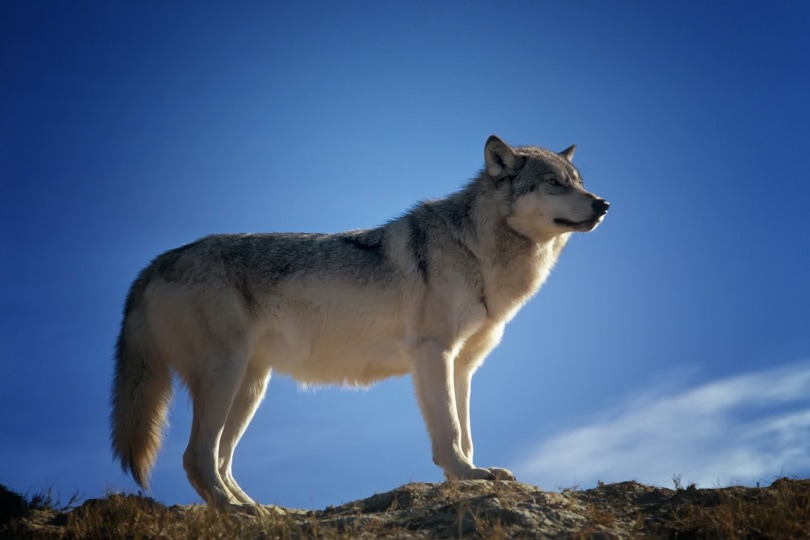
Native to Eurasia and North America, the wolf is the world’s largest wild dog. An adult wolf usually weighs between 80 and 90 pounds, standing up to 35 inches in height. It is a carnivore and preys on large hooved animals, livestock, and some smaller animals. There are more than 250,000 wolves in the wild, and while wild wolf attacks do happen, instances of wolf attacks on people are very rare because the animal tends to live away from people.
It is estimated that there are fewer than 20,000 wild wolves in America, two-thirds of which are in Alaska. Although numbers have dwindled following the intentional killing of wolves, they are increasing once again amid conservation efforts.
As well as Alaska, packs of wolves are known to be present in 8 or 9 states, and individual wolves have been sighted in 10 more states. Numbers and sightings are on the rise.
Wolf Habits
The wolf is a social, pack animal. The pack lives together and uses the strength of the group to help bring down large prey animals. A pack, which usually consists of a breeding pair and their offspring, can consist of up to 20 wolves.
Within the pack, the breeding pair are the dominant animals. Pups grow very quickly with their eyes open 2 weeks after birth. By 3 weeks, they are playing indoors and weigh around 6 pounds. By 5 weeks, they are exploring outside the den and will weigh 12 pounds or more. At 6 weeks of age, the mom will start to wean the pups, and they will hunt and explore, having left the den by the time they reach 3 months of age.
As a male wolf matures, it may challenge the dominance of the alpha male. If it wins, it will take over the alpha role. If it loses, it will usually be forced to leave the pack and wander alone or form a pack of its own. Weak wolves, that are regularly picked on by the rest of the animals, may also leave the pack behind and exist on their own.
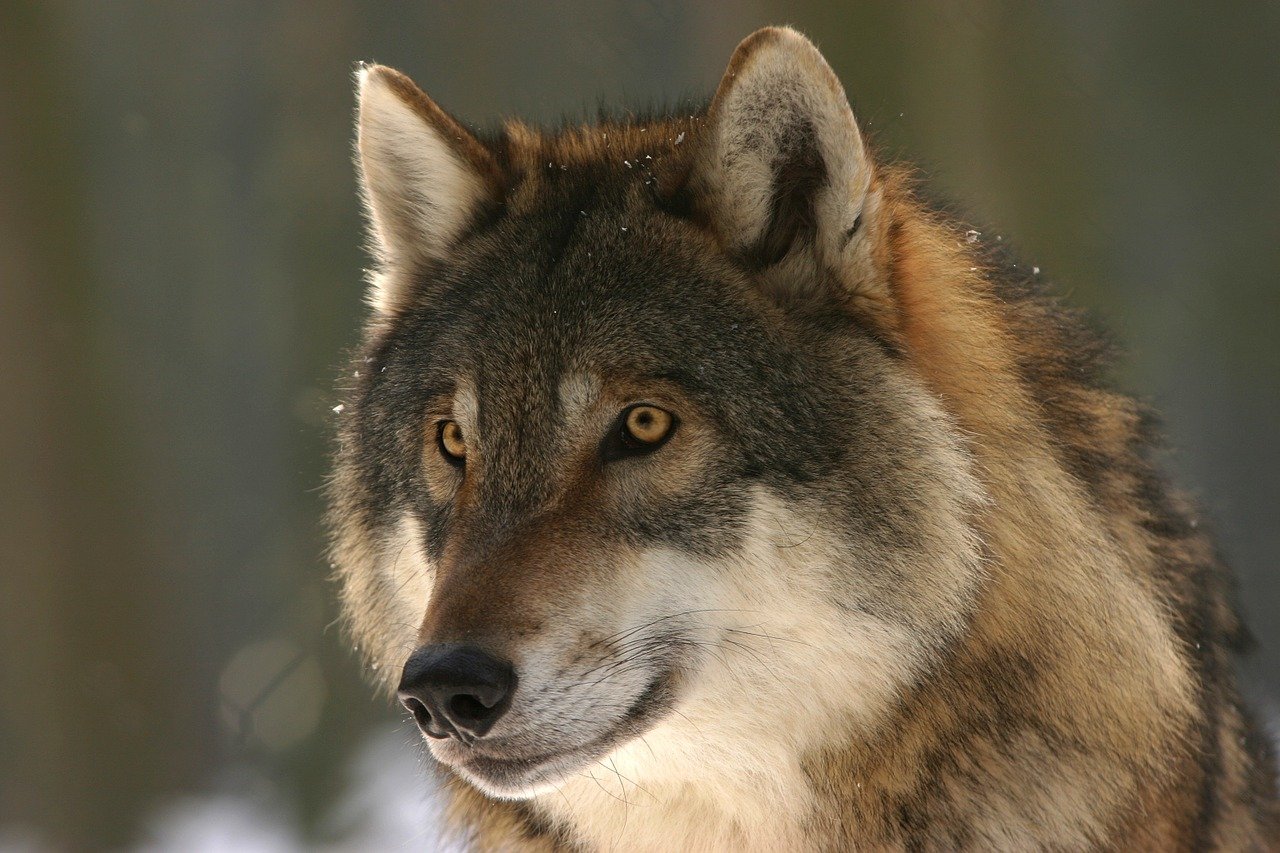
Wolf Dogs
Strictly speaking, a wolf dog is born by breeding a wolf with a domestic dog: typically, a German Shepherd, Husky, or Malamute.
The reality is that many owners of wolf hybrids do not admit to it, for fear of falling foul of state law or because of difficulties faced with inoculations and vaccines. Other owners claim that their 100% domestic dogs are hybrid dogs, even though there is no wolf ancestry in the dog. There is no requirement to register wolf dogs, although their ownership is being made illegal in an increasing number of states.
When looking at wolf dogs, breeders will usually claim a ratio of wolf DNA to dog DNA or a percentage of wolf in the hybrid. The direct descendant of a wolf and a domestic dog would be considered 50% wolf. If this is then bred to another wolf, it would increase the percentage of wolf heritage. It is very easy for breeders to claim that their pups are 80% wolf when, in reality, they may be more like 10% wolf or have no wild wolf DNA whatsoever.
Related Read: Czechoslovakian Wolfdog
Is It Legal?
The writing of dangerous dog laws, and specifically the naming of what are considered to be dangerous breeds, is conducted at a state level in the US. There are no federal laws to determine what is and what is not considered an illegal pet, and the same is true of wolves.
It is illegal to keep a wolf in the following states:
- Connecticut
- District of Columbia
- Hawaii
- Idaho
- Illinois
- Louisiana
- Maryland
- Massachusetts
- Rhode Island
Furthermore, in Alaska, Michigan, and North Dakota, it is illegal to own a wolf or wolf dog, unless it is grandfathered in. This means that if you owned the dog before the law was brought in, it is still legal to own it. In Alaska, however, this means that owners must have had the wolf before 2002.
In those states where it is considered legal to own a wolf or wolf dog, it may still be necessary to attain a dangerous animal license. This is true for owners in New York, for example.
Wherever you live, you need to determine local laws yourself. If you fall foul of the law, the wolf will be taken from you and you may receive a penalty for its ownership.
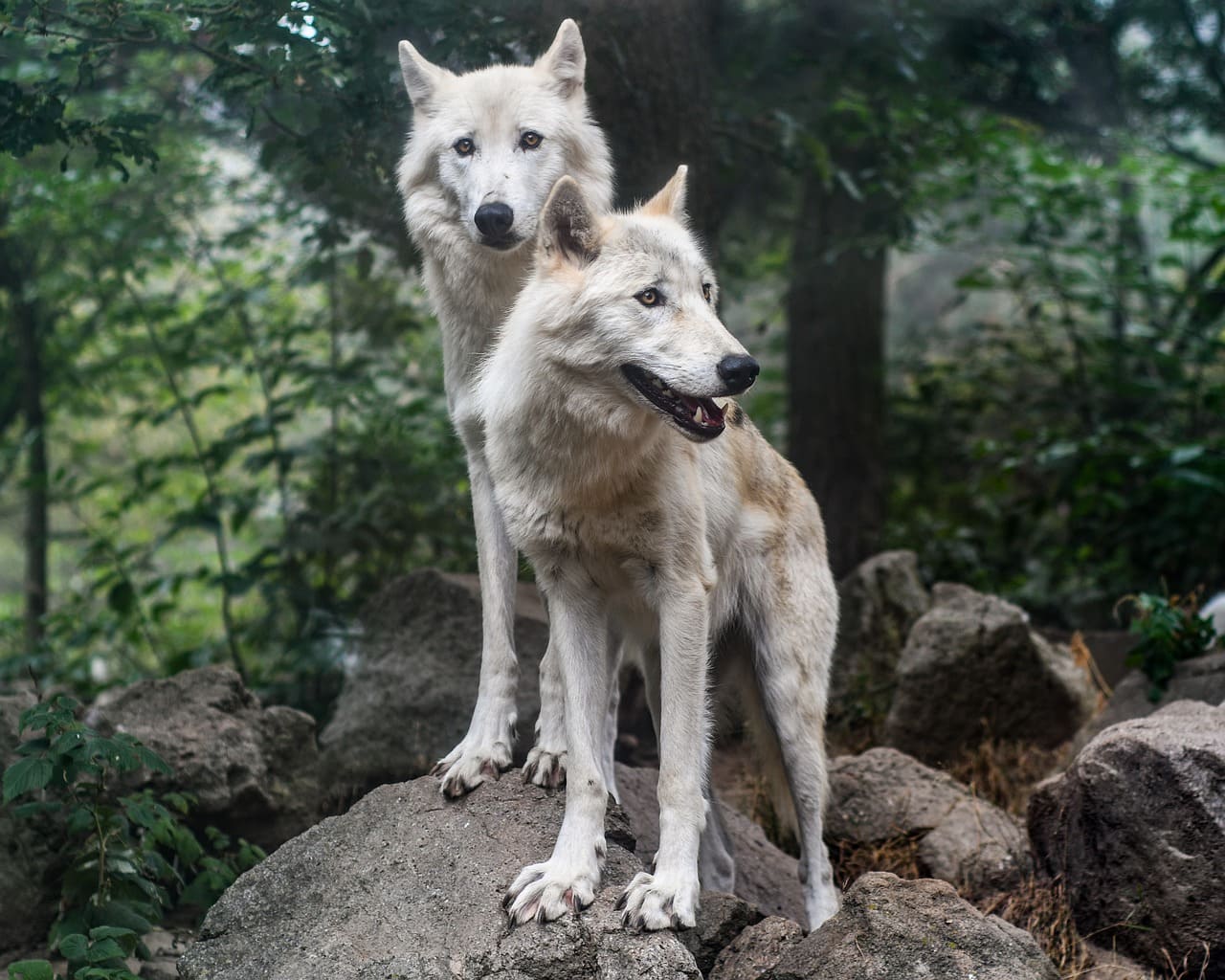
Rearing
Most owners take on wolves when they are young pups. This can help to smooth some of the wild edges of the animal, although it is worth noting that wild animals will almost always revert to kind when they are put in certain situations.
Captive wolves are taken from their moms at 14 days of age. They require intense socialization for the first week or two and need to be kept separate from adult wolves and dogs so that they can develop an attachment to their human. Supplements will need to be given to the pups at this young age because wolf milk contains higher levels of arginine than any commercially available wolf milk.
Wolves can develop attachment behavior, but they are known to bond with only one human. They may bond with a whole family, but only if the whole family is involved in the rearing and feeding habits thereafter.
Humans that are not considered part of the wolf’s pack will be ignored. The wolf will not make eye contact with them and will not listen to commands that they give.
Wolves are territorial, pack animals. They protect their food and items that they consider to belong to them. They can perceive new humans as a threat to their position or their food and may react accordingly. You must always be on your guard when near strangers and even visitors, and remember that wolves greet one another using mouth hugs, which means that they say hello by placing their mouths around other wolves, dogs, and people.
Exercise and Confinement
In the wild, wolves can roam up to 100 miles in a single day. They find food, shelter, and water in this space, and roaming is an important part of their lives. It is highly unlikely that owners can provide this amount of space, which can lead to depression and anxiety in wild wolves. They cannot and should not be kept tied up in a yard or small enclosure.
Even if you can provide a large area, wolves are known for their ability to escape professionally designed perimeters. They are masters at jumping, climbing, and digging. They will spot an opening and utilize it in a bid to escape. They can even open gates, after watching their owners using them a few times.
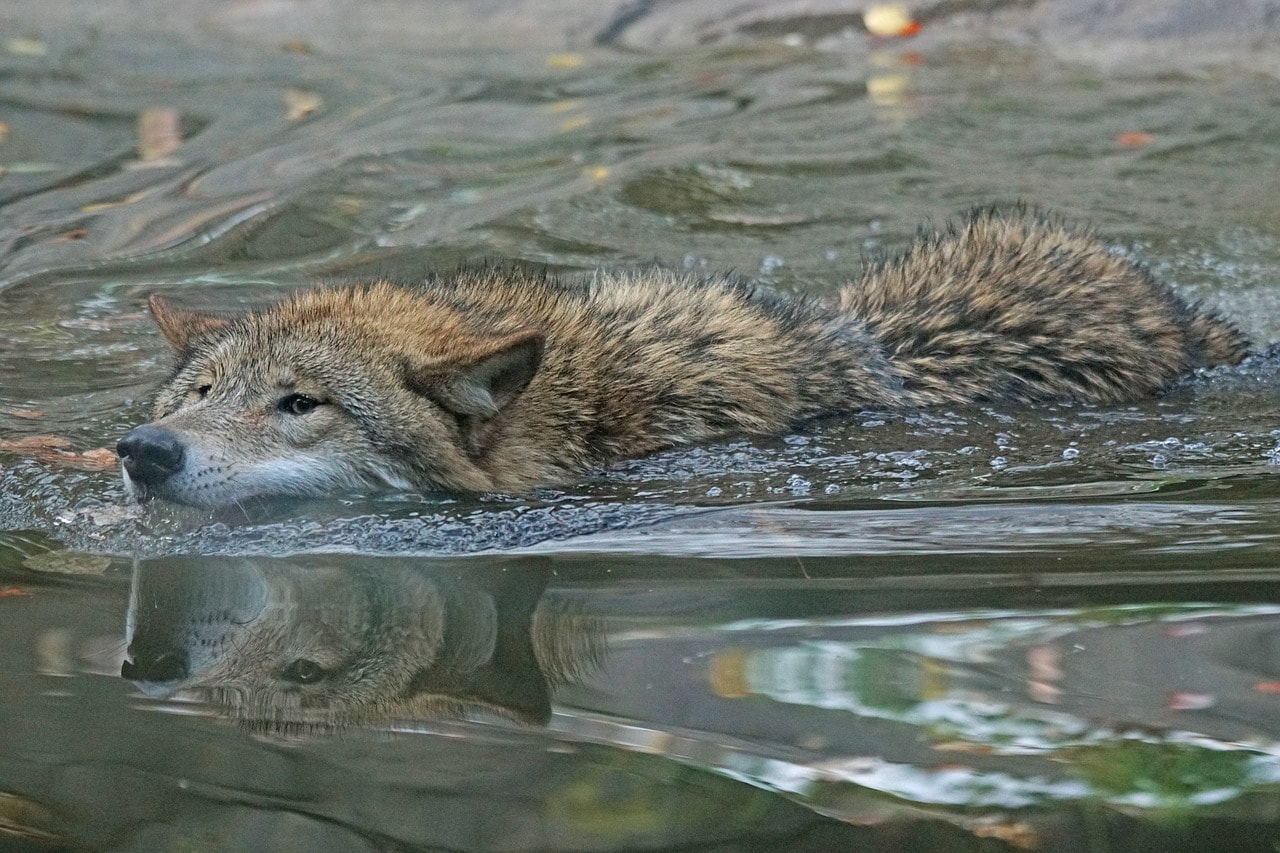
Diet
Wolves are carnivores. They rely on meat to provide the necessary nutrients, vitamins, and minerals that they require. What’s more, they require all parts of the animal, including organs, skin, bones, and supplemental parts like antlers.
These ingredients are not found in commercial dog food. What is found in most commercial dog food are grains. Wolves cannot process grains. Dog food will not provide the nutrients that a wolf requires, and it is necessary to feed them as much as 20 pounds of meat and organs, per week.
Training
Wolves can be trained, but the techniques used and results gained are quite different from those experienced in domestic dogs. Coercive and forceful training will not usually yield positive results.
You may be able to teach routine and encourage behavior, but there is no guarantee, and even if you do train a wolf to perform a particular action on command, its free-spirited nature means that it will simply choose to ignore you sometimes.
Attacks
Wolf attacks are rare because historically, wolves have endured negative experiences with hunters, trappers, and other humans. They stay away, which means that wild wolves rarely have any cause to attack humans.
However, captive wolf attacks are a lot more common. If a wolf is in a restricted space and feels that space is threatened, their fight or flight preference will cause them to fight, whereas in the wild with a 100 square mile territory, they would choose flight.

Vaccinations
Domestic dogs undergo regular vaccinations and inoculations. Such vaccinations protect against diseases like parvovirus, distemper, and canine hepatitis, among others. Vaccines stop dogs from catching these diseases and prevent them from spreading. No such vaccinations exist for wolves, and one of the biggest threats that wolves and their owners face is rabies.
Even if a vet is willing to vaccinate, they will usually require an owner to sign paperwork indemnifying them of any potential damages. If a wolf, whether a pet or wild, bites, then state authorities will euthanize the animal, regardless of whether it has been vaccinated or given a clean bill of health by a vet, because they claim that the only way of ensuring that one does not have rabies is by testing the brain.
Many vets will refuse the treatment of wolves and wolf dogs. The animals pose a threat to the vets, their staff, and other clients, especially when taken to the surgery.

Can You Have a Wolf As a Pet?
Owning a wolf or wolf dog is legal in some states, but owning one is more than a major undertaking, and not one that we recommend. You need to have substantial land to keep the animal happy. You need to provide a lot of meat and organs, each week, for food, and you will struggle to have the wolf vaccinated or even treated by a vet.
SEE ALSO: 14 Dog Breeds That Look Like Wolves
Featured Image Credit: Pixabay
Nicole is the proud mom of Baby, a Burmese cat and Rosa, a New Zealand Huntaway. A Canadian expat, Nicole now lives on a lush forest property with her Kiwi husband in New Zealand. She has a strong love for all animals of all shapes and sizes (and particularly loves a good interspecies friendship) and wants to share her animal knowledge and other experts’ knowledge with pet lovers across the globe.






